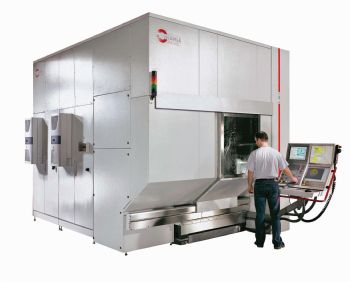
The German machine tool manufacturer Hermle — represented in the UK by Gosport-based Geo Kingsbury Ltd (
www.geokingsbury.com) — is integrating an additive-manufacturing capability into a five-axis machining centre in a move that it says heralds a profound change in the production of complex metal components.
The additive production of 3-D metal components often involves an energy-intensive laser to melt and fuse successive layers of powder; Hermle’s MPA (metal powder application) technology is a thermal spray process based on lower-energy kinetic compacting, or micro-forging.
The development of MPA has taken Hermle more than seven years to perfect, and the company is currently consulting with German customers to identify suitable applications, discuss how the process can be implemented and produce specific parts for them.
A five-axis C 40 U machining centre is the host platform for the addition of MPA. The hybrid machine, known as an MPA 40, has a powder application nozzle mounted alongside the vertical milling spindle and a heater built into the 4th/5th-axis rotary swivelling table.
A production cycle involves clamping an application-specific faceplate onto the rotary table, importing the CAD model of the component to be produced, and converting the 3-D data into successive micro-forging and milling cycles, which can be followed by water quenching and heat treatment, if necessary.
A high-energy jet of super-heated steam propels metal powder suspended in nitrogen through a Laval nozzle onto a substrate at three times the speed of sound. The impact creates local pressures of 10GPa and temperatures up to 1,000°C. The result is localised super-plastic deformation, forging the powder particles together and onto the component surface.

The fully dense, bonded layer is then machined by metal cutting using up to five CNC axes, followed by deposition of a further layer. The process is repeated any number of times to produce the required component; moreover, micro-forging allows dissimilar metals (up to six) to be layered, with either a sharp or a smooth transition between them.
Currently available are 1.2344 and 1.2367 hot-working steels, 1.4404 stainless steel, copper, bronze, titanium and aluminium.
Components up to 550mm in diameter, 460mm deep and weighing up to 600kg can be produced; and because there is an option to use a water-soluble filler material to create internal features such as conformal cooling channels in plastic injection moulds, almost any internal geometry can be produced.
Although traditional additive manufacturing can achieve a similar result, Hermle’s MPA method can produce mixed-metal solutions — such as a heat-conducting copper core inside a tool steel exterior.